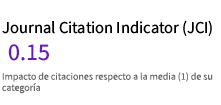Iconoclasm, Body, and Power: Women and Protests through Artwork Interventions
Keywords:
Gender violence, Suffrage, Art, Iconoclasm, Vandalism, ProtestsAbstract
This article presents a comparative study of two events with more than a hundred years time difference between them. However, they share similar principles regarding women protesting in the streets against gender violence and demanding rights. The intervention in the painting The Rokeby Venus by Diego Velázquez, perpetrated by the suffragette Mary Richardson in England in 1914, is compared with contemporary feminist interventions in Mexico during feminist protests, specifically, the graffiti on monuments such as the «Ángel de la Independencia» in 2019. Thus, this paper argues that these events can be seen as iconoclastic acts because these women attacked the works of art with motivation. The interventions were a protest against the lack of State support regarding demands such as women’s suffrage or tackling gender violence, like feminicide.
Downloads
Metrics
References
«A Deranged Suffragette Attacks and Damages the Rokeby Venus by Velasquez». En: <https://www.heretical.com/suffrage/1914tms2.html> (fecha de consulta: 10-11-2022).
AGÜERO, Melissa, «Neo iconoclasia, protesta feminista legítima». En: <https://www.lajornadamaya.mx/opinion/185220/neo-iconoclasia-protesta-feminista-legtima> (fecha de consulta: 10-11-2022).
ALONSO, Daniel, «La batalla para evitar el derribo de la ‘Glorieta de las mujeres que luchan’». En: <https://elpais.com/mexico/2022-10-12/la-batalla-para-evitar-el-derribo-de-la-glorieta-de-las-mujeres-que-luchan.html> (fecha de consulta: 10-11-2022).
ARELLANO, César, «Prevalecen feminicidios en México: al menos 10 mujeres asesinadas al día». En: <https://www.jornada.com.mx/notas/2022/04/04/sociedad/prevalecen-feminicidios-en-mexico-al-menos-10-mujeres-asesinadas-al-dia/> (fecha de consulta: 10-11-2022).
BERGER, John (1972), «Chapter 3», Ways of Seeing, Penguin, Londres, pp. 45-64.
BUTLER, Judith (2017), Cuerpos aliados y lucha política: hacia una teoría performativa de la asamblea, Paidós, Barcelona.
COLLINSON, Alwyn, «Black Friday and the Suffragette struggle». En: <https://www.museumoflondon.org.uk/discover/black-friday> (fecha de consulta: 10-11-2022).
«Cuál es el origen del Día de la Mujer (y por qué se conmemora el 8 de marzo)». En: <https://www.bbc.com/mundo/noticias-47489747> (fecha de consulta: 10-11-2022).
GAMBONI, Darío (2014), La destrucción del arte: Iconoclasia y vandalismo desde la Revolución Francesa, Ediciones Cátedra, Madrid.
«Glorieta de mujeres que luchan: madres buscadoras develan antimonumento para reemplazar escultura de Colón». En: <https://www.animalpolitico.com/2021/09/glorieta-mujeres-antimonumento-escultura-colon/> (fecha de consulta: 10-11-2022).
LUKINOVIC, Jonathan (2020), «Intervención y destrucción de monumentos públicos en América Latina como respuesta ante el dominio cultural e ideológico del espacio público», Contenciosa, n.º 10, diciembre, pp. 1-24.
MANDUJANO, Rocío, «Encapuchadas derriban vallas para vandalizar monumentos a Colón y Cuauhtémoc». En: <https://noticieros.televisa.com/ultimas-noticias/encapuchadas-vandalizan-monumentos-de-reforma-en-marcha-feminista/> (fecha de consulta: 10-11-2022).
«Marcha 8M: Así van las movilizaciones en todos los estados de la República». En: <https://www.elfinanciero.com.mx/estados/2023/03/08/marchas-dia-de-la-mujer-8-de-marzo-en-vivo-movilizaciones-en-los-estados/> (fecha de consulta: 20-05-2023).
NEAD, Lynda (2015), «Part II: Redrawing the Lines». Female Nude: Art, Obscenity and Sexuality, Routledge, Londres, pp. 34-72.
PURVIS, June (1995), «The prison experiences of the suffragettes in Edwardian Britain», Women’s History Review, n.º 4, diciembre, pp. 103-133.
ROBLEDO, Karen. «No es vandalismo, se llama iconoclasia. ¿Por qué se criminaliza la protesta feminista?». En: <https://plumasatomicas.com/explicandolanoticia/no-es-vandalismo-se-llama-iconoclasia-por-que-se-criminaliza-la-protesta-feminista/> (fecha de consulta: 10-11-2022).
RUIZ, Kevin, «Así quedó el Ángel de la Independencia tras marcha feminista». En: <https://www.eluniversal.com.mx/metropoli/cdmx/asi-quedo-el-angel-de-la-independencia-tras-marcha-feminista/> (fecha de consulta: 10-11-2022).
SALAS, Kenia, «¿Por qué en México las jóvenes feministas quieren quemarlo y romperlo todo?». En: <https://latfem.org/por-que-en-mexico-las-jovenes-feministas-quieren-quemarlo-y-romperlo-todo/> (fecha de consulta: 10-11-2022).
SÁNCHEZ, Karla, «Entrevista a Restauradoras con Glitter: “Queremos que exista un registro minucioso del miedo, enojo e indignación”». En: https://letraslibres.com/arte/entrevista-a-restauradoras-con-glitter-queremos-que-exista-un-registro-minucioso-del-miedo-enojo-e-indignacion/> (fecha de consulta: 25-5-2023).
«Start of the suffragette movement». En: <https://www.parliament.uk/about/living-heritage/transformingsociety/electionsvoting/womenvote/overview/startsuffragette-/> (fecha de consulta: 10-11-2022).
STEPHENSON, Andrew, (2013) «Introduction: Edwardian Art and its Legacies», Visual Culture in Britain, n.º 14, enero, pp. 1-20.
«Vandalizan edificios, monumentos y calles durante marcha del 8M». En: <https://www.eluniversal.com.mx/nacion/sociedad/vandalizan-edificios-monumentos-y-calles-durante-marcha-del-8m> (fecha de consulta: 10-11-2022).
Downloads
Published
How to Cite
Issue
Section
License
Copyright (c) 2023 Blanca Aidé Herrmann Estudillo

This work is licensed under a Creative Commons Attribution-NonCommercial-ShareAlike 4.0 International License.
Todos los contenidos publicados en la revista Boletín de Arte están sujetos a la licencia Creative Commons Reconocimento-NoComercia-Compartirigual 4.0 cuyo texto completo puede consultar en <http://creativecommons.org/licenses/by-nc-sa/4.0>

Los/as autores/as cuyas contribuciones sean aceptadas para su publicación en esta revista conservarán el derecho no exclusivo de utilizar sus contribuciones con fines académicos, de investigación y educativos, incluyendo el auto-archivo o depósito en repositorios de acceso abierto de cualquier tipo.
La edición electrónica de esta revista esta editada por la Editorial de la Universidad de Málaga (UmaEditorial), siendo necesario citar la procedencia en cualquier reproducción parcial o total.







4.png)
